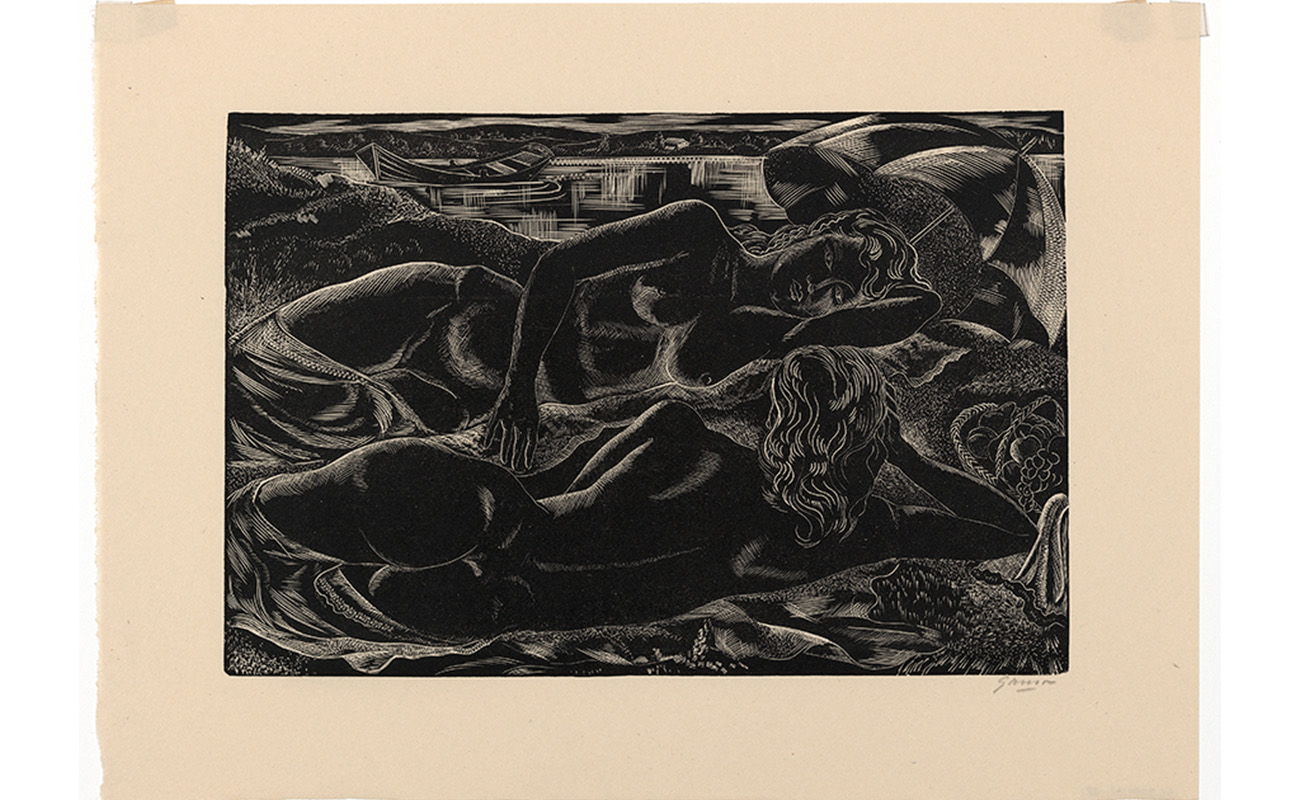
“Art Defeats Oven”
Guest blogger Maggie Kurkoski was the Brown Post-Baccalaureate Curatorial Fellow at the Smith College Museum of Art from 2013-2015.
This piece includes works from The Gladys Engel Lang and Kurt Lang Collection, a collection of prints which was recently donated to the Museum.
Born in 1895 in Halberstadt, Germany, Emil Ganso showed an early talent for art. His mother bought him paints and encouraged his potential, and at fourteen the local pastor arranged for Ganso to be apprenticed to a lithography studio. Despite the clergyman’s help, Ganso’s family was too poor to pay for the room and board, and so Ganzo was forced to give up this early opportunity.
Ganso was instead apprenticed to a baker, with limited success: lacking natural talent in the kitchen, he was eventually fired for his inconsistent baking. After he had been hired and then fired by many of Halberstadt’s bakeries, Ganso took a job as a dishwasher for a trans-Atlantic shipping company. It was at the end of his sixth journey across the ocean that Ganso decided to disembark in the United States, seventeen years old and a penniless immigrant who spoke no English.
When Ganso was unable to take on any full-time employment, he began taking on shifts in bakeries to make ends meet. These grueling shifts lasted as long as fourteen hours, sometimes more on the weekends. Despite his exhausting schedule, Ganso made a point of attending classes at the National Academy of Design when he could, although sometimes he could barely keep his eyes open: as he later put it, “Just imagine me falling asleep with a nice nude model right in front of me!”
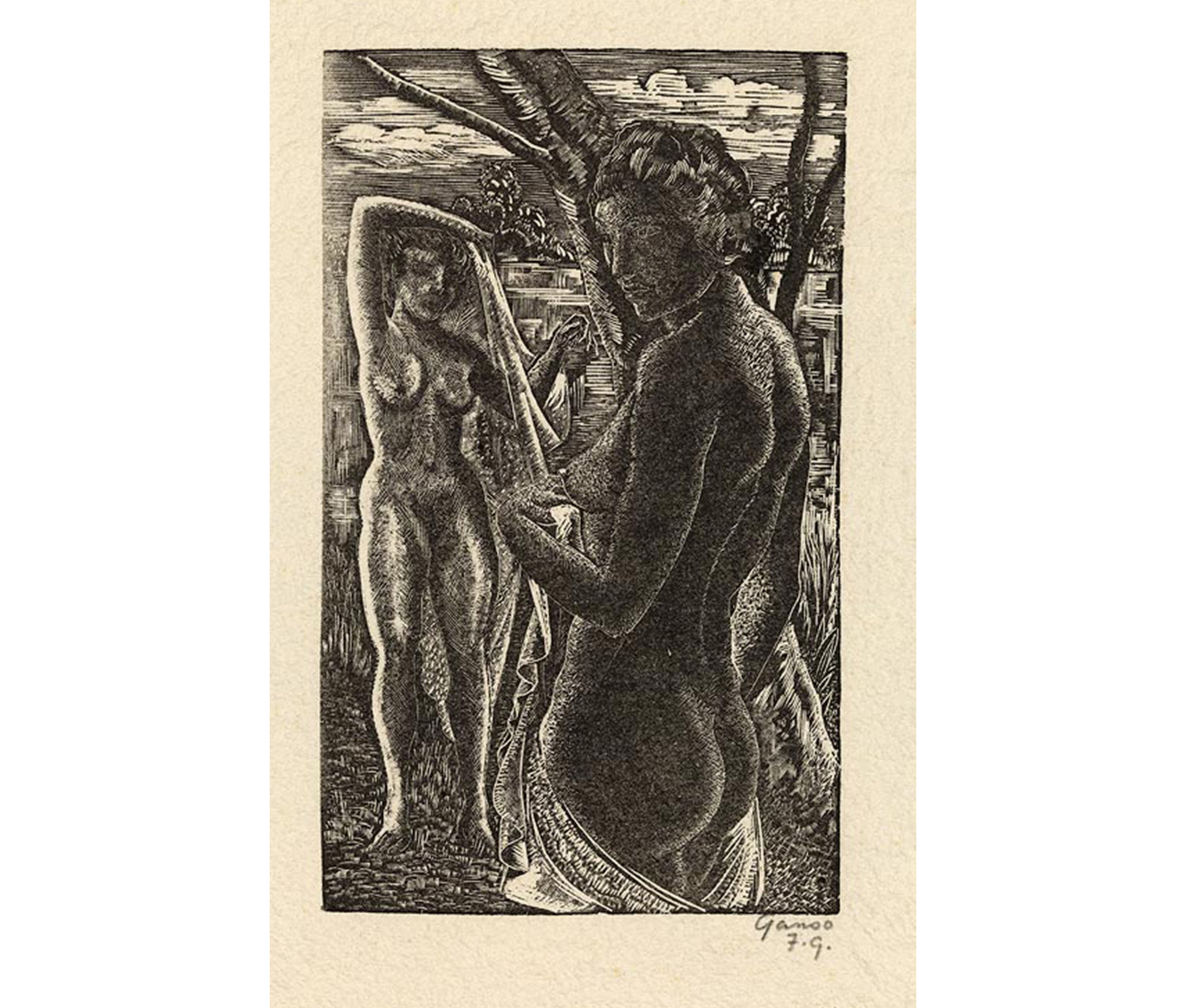
Emil Ganso. American, 1895–1941. The Bathers, 1951. Wood engraving in black on medium thick, rough, cream-colored paper. Bequest of Henry Latimer Seaver. SC 2011.26.32.
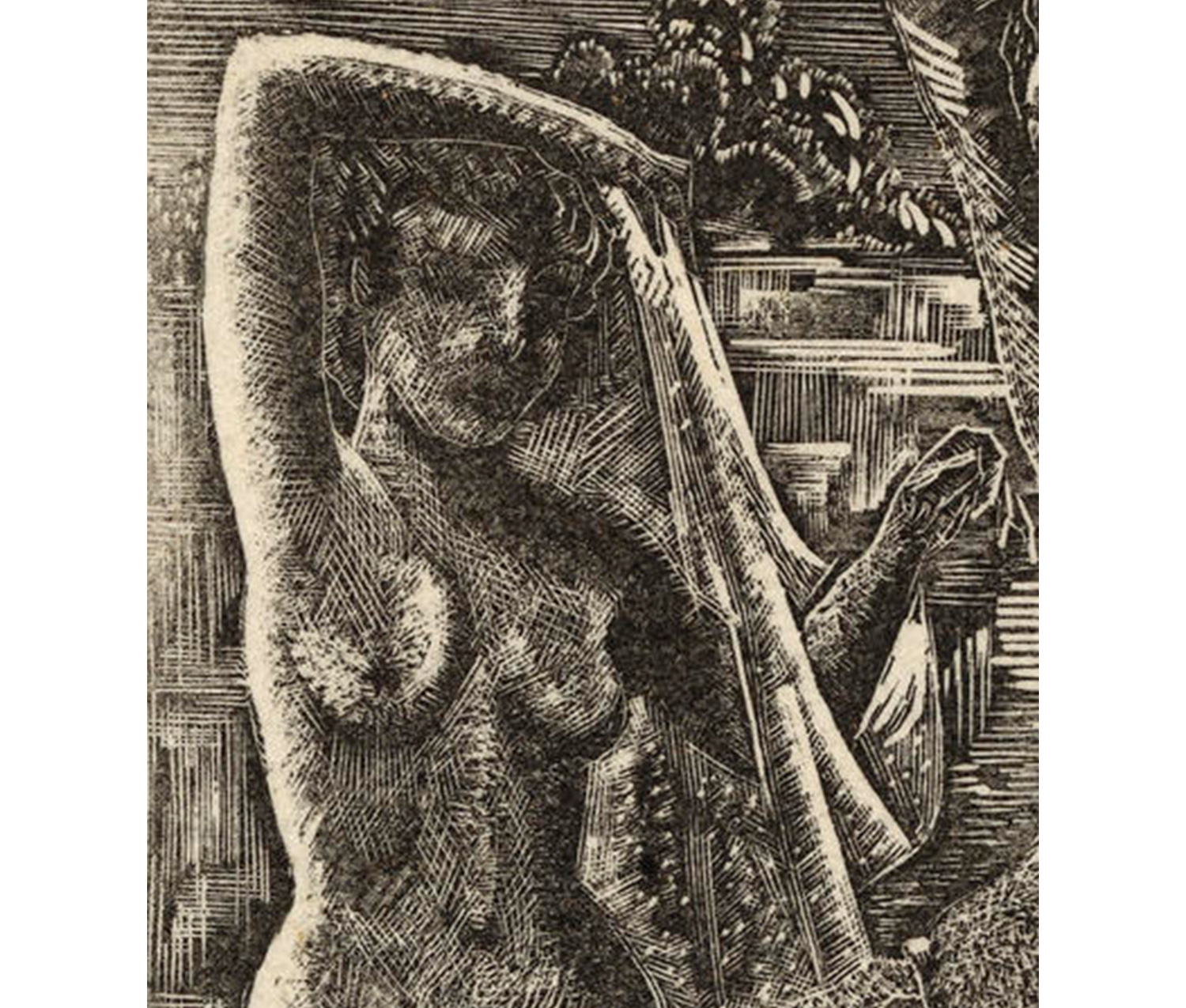
Detail of The Bathers
In 1917, Ganso was renting a room above a brothel with his friend and fellow artist Jan Matulka. Soon labor reforms had reduced his bakery shifts to a mere eight hours a day, and he used that time to work on his art.
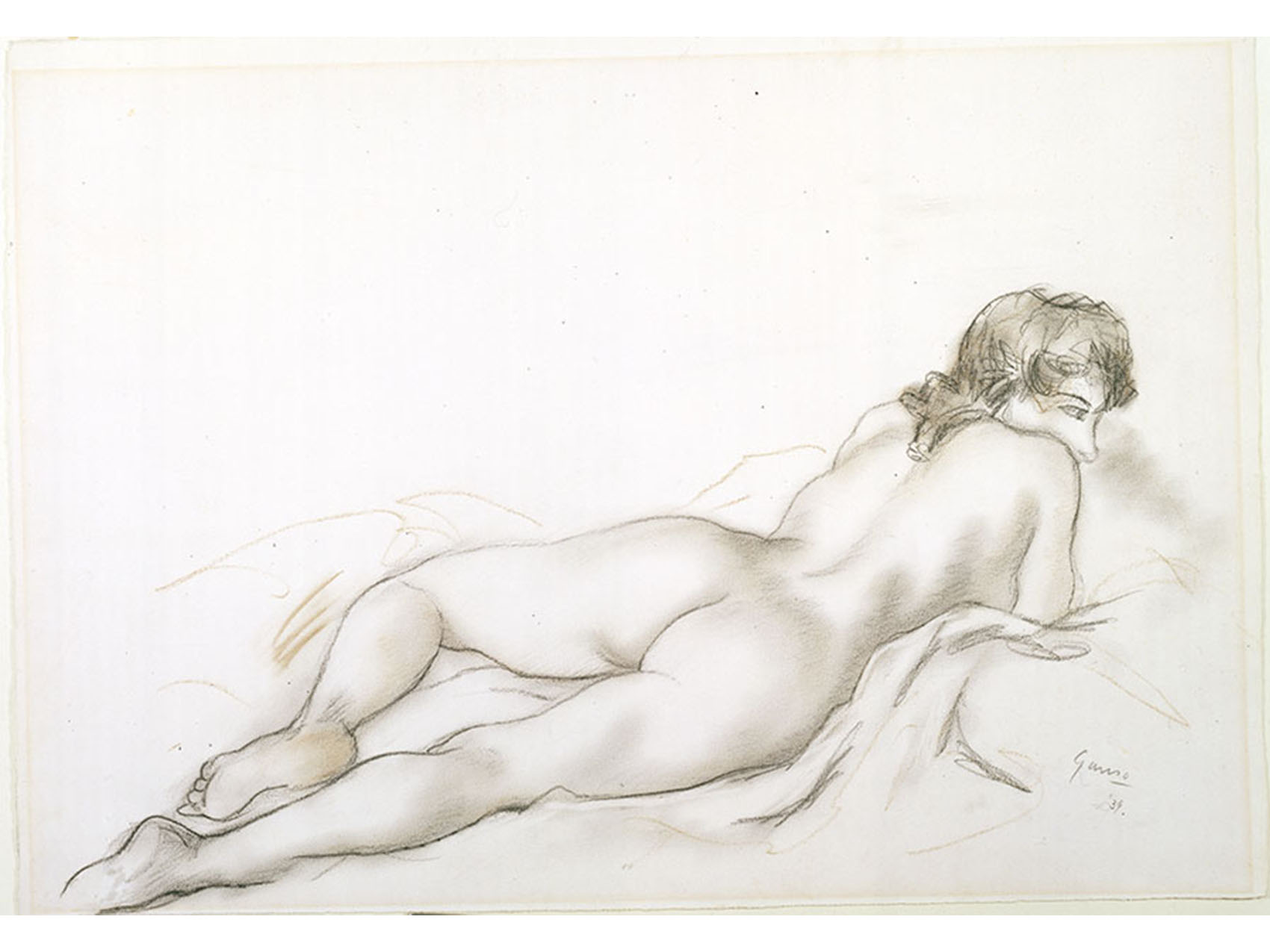
Emil Ganso. American, 1895–1941. Reclining Nude, 1939. Charcoal in black and brown. Gift of the estate of Agnes M. Newborg (Agnes Morgenthau, class of 1914). SC 1972.14.3.
Around this period, Ganso began to experiment with etching, having found an abandoned printing press in his apartment building. Slowly, his artistic reputation grew, but it was not until 1925 that he felt comfortable enough to quit his day job, coinciding with his first show at the Weyhe Gallery.
The show gained considerable media attention, in large part due to Ganzo’s previous employment: The New York Evening Post titled their review of the exhibition “Art Defeats Oven: Baker Will Paint.”
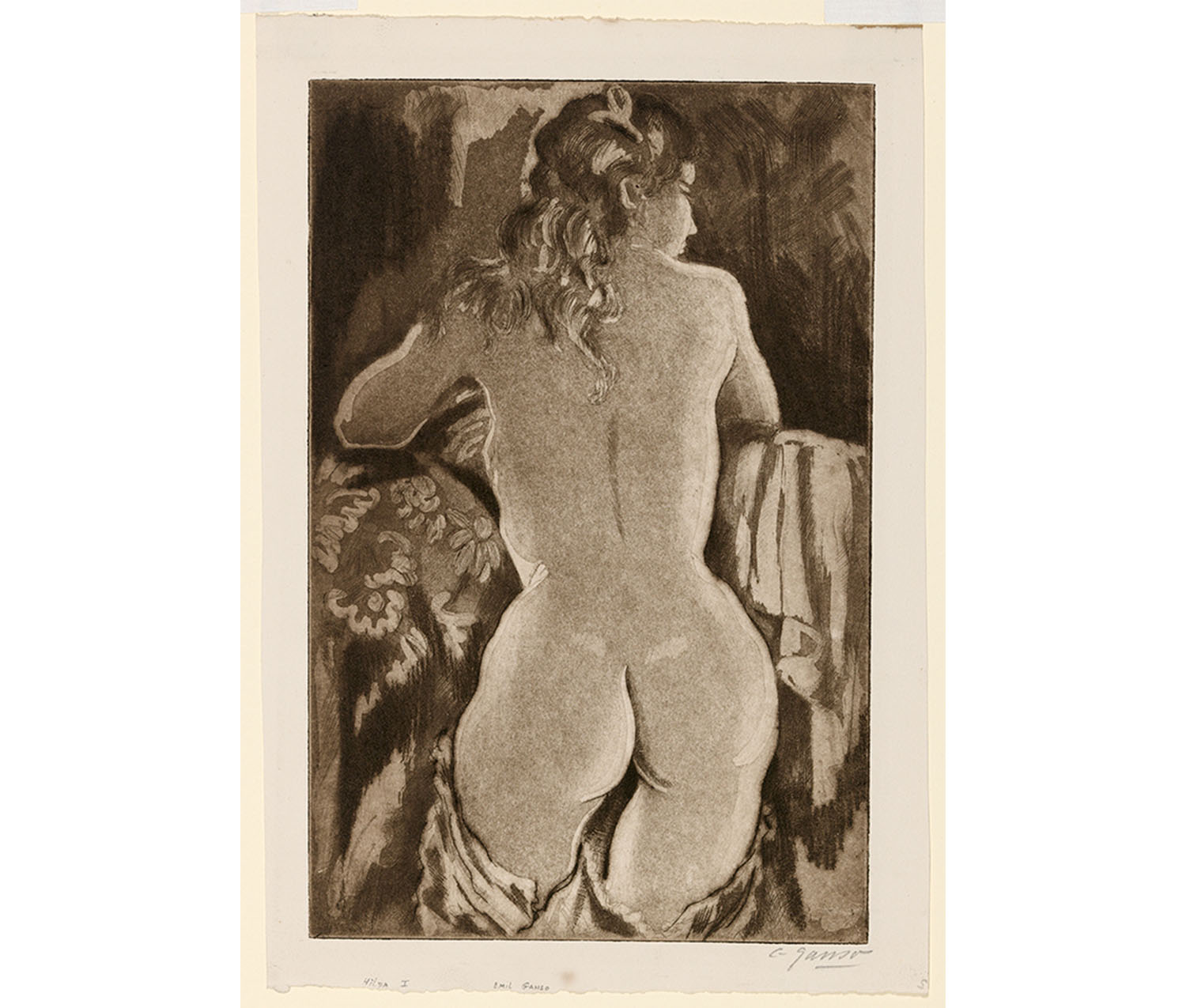
Emil Ganso. American, 1895 –1941. Hilda 1, 1929. Aquatint and etching in brown tones on medium weight, slightly textured, cream-colored paper. The Gladys Engel Lang and Kurt Lang Collection. SC 2014.32.280.
In the following decades, Ganso continued to grow and develop as an artist and, eventually, as a teacher of art at the University of Iowa. In April 1941, however, a fatal heart attack cut his life short. He had just turned forty-six.
Carl Zigrosser, an art historian and friend, said this about Ganso’s passing: “He cared little for social prestige, fame as such, political and social questions. He wanted above all to make pictures, to render concrete his ideal world in terms of ink and pigment… His death is a great loss to those who knew him. But his work endures for all the world to enjoy.”